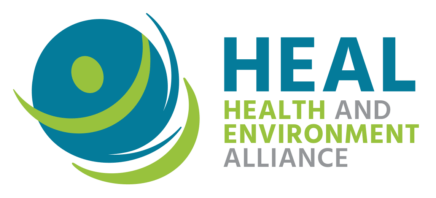HEAL welcomes the call from 250 scientists urging the European Commission to follow scientific recommendations and include provisions to account for the effects of chemical mixtures to better protect health in the upcoming revision of REACH, the EU’s regulation for chemicals.
Environmental health advocates have welcomed today’s release of the European Chemicals Strategy for Sustainability as a major step forward in the delivery of Europe’s Zero Pollution Objective. They however insisted that the ability of the strategy to truly minimise people’s exposure to harmful substances and prevent diseases will highly depend on the practical implementation of the proposed initiatives and the commitment to put innovation at the service of protection, rather than the contrary [1].
The EU chemicals strategy represents the most transformative chemical policy initiative at European level in 20 years and is a once-in-a-decade opportunity to rethink Europe’s approach to chemicals management. The European Commission already missed the 2018 deadline for the delivery of an EU strategy for a non-toxic environment (as stipulated under the seventh Environmental Action Plan), and therefore the chemicals strategy partially addresses long-overdue commitments for health and environment protection [2]. The document released today acknowledges important demands raised by the health community throughout the process, although the devil is in the details and implementation steps need to be clarified.
Natacha Cingotti, Senior Policy Officer for Health and Chemicals at the Health and Environment Alliance (HEAL) said: “Every day, our exposure to cocktails of harmful chemicals is translating in real-life health conditions and diseases for current and future generations. This is why the environmental health community has put such high expectations in this strategy.
While we welcome this significant step forward, the reality leaves no room for self-complacency and it is urgent the Commission gets to work to implement the promises made to effectively protect people from harm and support safe innovation for non-toxic material cycles. Initiatives to better categorise and strictly regulate chemicals of concerns such as endocrine disruptors and PFAS are particularly pressing.”
Positive aspects of the strategy include:
- The concept of a toxic free hierarchy for chemical management, which prioritises the design of safe and sustainable chemicals and the commitment to move toward non-toxic material cycles.
- The concept of “essential use” to limit hazardous substances, although the way ‘the most harmful chemicals’ herein targeted will be defined remains unclear.
- The extension of the use of the generic risk assessment approach beyond carcinogenic, mutagenic or reprotoxic (CMR) chemicals to other hazards, such as endocrine disruption, persistence, bioaccumulation and toxicity (PBTs), target organ toxicity and immunotoxicity and for the regulation of all consumer products.
- On endocrine disruptors, several commitments including:
- Proposing the establishment of legally binding hazard identification of endocrine disruptors beyond pesticides and biocides legislations;
- Banning endocrine disruptors from consumer products as a matter of principle;
- Introducing a specific SVHC category for EDCs under REACH.
- Actions to address the use and contamination of the persistent poly- and perfluoroalkyl substances (PFAS), including commitments to:
- ban all PFAS in fire-fighting foams and other uses based on the essential use approach;
- adopt a group approach to PFAS across legislations;
- establish an EU-wide approach and financial support to research for remediation techniques to PFAS contamination (although HEAL is of the view that the polluter pays principle should apply here).
- New hazard classes to fully address environmental toxicity, persistency, mobility (PMT and vPvM).
- The registration of certain polymers under REACH.
Aspects requiring clarification due to their likely important impacts on implementation include:
- General approach proposed:
- The goal of innovation largely dominates the strategy and clear commitment to put it at the service of protection could be clarified.
- The strategy acknowledges that ‘the future rise in chemical production and use risks further widening the ‘unknown territory of chemical risks’’, but highlights an increased knowledge base at the expense of a decrease of chemical volumes overall.
- The strategy highlights early on the resort to impact assessment processes in order to achieve progress in the areas detailed all throughout the document, which raises concerns of delay and lowering of protection levels.
- The proposal for ‘one substance, one assessment’ deserves more details. Civil society groups have highlighted that protection gains will require the commitment to ‘one substance, one hazard assessment’. While the strategy highlights simplification and transparency, it is silent on this aspect.
- Specific measures:
- The proposed approach to mixtures: the current draft mentions a commitment to ‘assess how to best introduce’ a mixture assessment factor (MAF) under REACH rather than a firm commitment to follow this approach.
Background
Earlier in the process of drafting the strategy, several media outlets across Europe reported on several instances about worrying developments suggesting that the departments for internal markets and health (respectively DG Grow and DG Sante) were working against proposals from DG Environment on how to overhaul EU chemicals legislation to increase health protection and coherence and efficiency, including oppositions to the proposed extension of the hazard-based approach in chemicals management [3].
Evidence of the real-life effects of toxic chemicals on our health is piling. Eurostat data already indicate that two-third of the chemicals produced in the EU are hazardous to health, which is especially worrying considering production is expected to double by 2030 [4]. The health costs of exposure to endocrine disrupting chemicals (EDCs) is estimated to be at least 163 billion Euros per year in Europe alone [5].
An online petition – launched by WeMove.EU, HEAL and the European Environment Bureau (EEB) and calling on EU Vice-President Frans Timmermans to guarantee that the EU chemicals strategy fully lives up to the Commission’s commitments towards zero pollution for a toxic-free environment – has been signed by over 126,520 citizens [6].


